Massachusetts: Choosing Growth in Innovation
13 Jan, 2014
By David Hodes
The Gov. Deval Patrick-Lt. Gov. Timothy Murray administration is steadily addressing economic issues and creating sustainable economic growth through a series of initiatives. The administration has put in play collaborative initiatives and investments related to supporting Massachusetts’ considerable assets in order to foster a next-generation innovation hub.
For example, the state’s 2014 budget includes $19.5 million for the Massachusetts Life Sciences Center, a life-science collaborative in Waltham, for research grants and incubators; and $18.75 million for MassDevelopment Advanced Manufacturing Futures program, the state’s finance and development authority in Boston, which in 2012 financed 280 projects that generated $2.3 billion in investment.
In August 2012, Gov. Patrick signed an act for infrastructure investment that includes economic growth and development, outlining a number of initiatives. Among those initiatives is the Science and Technology Research and Development Matching fund, a $50 million fund to support the collaborative research and development projects among businesses and universities.
The legislation also created a $1 million talent pipeline through the Massachusetts Technology Collaborative that will provide matching grants to increase technology sector internships, and another $1 million to support mentoring, advice, and incubator programs.
The administration, along with the private and public sector, created an economic development strategy in 2011 that includes five specific missions and 55 goals that will help successfully advance each mission.
It was developed through an economic planning council of 34 public and private sector representatives led by Greg Bialecki, secretary of the Executive Office of Housing and Economic Development, which builds on the job creation strategy of the administration.
This strategy builds on one of the state’s most effective business growth programs, the Economic Development Incentive Program, which is an investment tax program. The program’s 141 approved projects have led to the creation of 9,102 new jobs and the retention of 34,105 jobs, leveraging $4 billion in private investment.
Industries and Innovations
In western Massachusetts, the focus has been in the financial services industry, says Allan Blair, president and CEO, Economic Development Council of Western Massachusetts. The cluster features large banking institutions and insurance companies such as Massachusetts Mutual Life Insurance and Bank of America, both of which are located in the region’s largest city, Springfield, and which employ approximately 12,000 people.
“We are looking to develop not necessarily back office but shared services that could be separated from headquarters operations,” Blair says. Those shared services would include human resources and call centers.
Another significant industry in the region is advanced manufacturing. Western Massachusetts is home to more than 200 precision machining companies with more than 7,000 employees. These companies manufacture precision machining components and assemblies for
major commercial manufacturers, aircraft engine builders and military equipment contractors across the globe. The companies in the industry are undergoing consolidation, “needing to scale up their businesses to be competitive,” Blair says. For example, precision manufacturing companies are migrating to medical device manufacturing.
The gaming industry is another economic engine for the region, Blair says. “It has little to do with manufacturing, but a lot to do with job growth both in the construction phase and permanent jobs once the casinos are built,” he says.
He says that they have an 850,000 square foot MGM Resorts International already coming to downtown Springfield, with another casino developer applying for a license to operate a casino and resort in Hampden County. There are others on the horizon. “So starting sometime in 2014 and through 2016, we will have significant activity happening on the construction side,” Blair says. “And these are $800 million to $1 billion facilities, which are huge projects for a county our size.”
Talent and Education
What also makes this part of Massachusetts special is access to the nation’s second highest concentration of college students, according to a report by Western Massachusetts Electric. Western Massachusetts is also an integral part of the Connecticut River Valley/I-91 region known nationally as “New England’s Knowledge Corridor.”
Blair goes back to the shared services focus for workforce issues, saying that western Massachusetts has a great network of higher education institutions that can produce the talent needed at those locations. “We already have a number of programs related to science, technology, engineering and math [STEM] in our community colleges that support those industries,” he says, adding that they also draw their workforce from Hartford, Conn., and Worchester.
Blair says the advanced manufacturing sector’s workforce issues are the biggest challenges because of higher level of technology used in the operations and the need to replace the aging workers in that industry. “Our institutions have responded with some very innovative state funding to provide training programs for incumbent workers to upgrade their skills,” he says. Blair’s organization has partnered with high schools, vocational tech schools, and community colleges, putting together a pilot program over the last 18 months that has produced approximately 200 new entrants to the workforce in precision machining and manufacturing.
Assets
Blair says that the backbone for the information technology sector — fiber optics specifically — have greatly improved in the last decade in western Massachusetts with “a lot of state and federal support and a tremendous regional push.”
The build-out of the fiber-optic network continues and should be completed in the next 18 months to two years throughout all of western Massachusetts. “We have to give a lot of credit to the secretary of education who understood that you just can’t have the rural part of the state not served by fiber optic and expect job growth to happen,” Blair says.
Additionally, private investments from five colleges in North Hampton that invested in a sonnet ring that connects a big trunk going east has presented more opportunities for the region. Recently, Aesta, LLC, an Omaha, Neb.-based systems integrator and project management company for communication networks and electronic security systems, together with the Five Colleges Board of Directors, and other local and state officials, marked the completion of the Five Colleges Fiber-Optic Network. The $3.6 million network will connect Amherst, Hampshire, Mount Holyoke, and Smith Colleges and the University of Massachusetts Amherst into a primary carrier hotel in Springfield. The 53-mile-long network furnishes almost limitless bandwidth, which will significantly enhance the educational reach and ability of Five Colleges, Inc.
Lifestyle
The Massachusetts lifestyle features an interesting mix of lively urban areas, beautiful seaside communities and rural towns. Median house prices range from $1 million in Nantucket on the eastern seaboard to $170,000 in Hampden in the mid-south region of the state. Median household income in the state is nearly $65,000; the U.S. average is $53,000.
The state’s largest city, Boston, with a population nearing 1 million, is home to some of the leading institutions of higher education, including Boston University and Harvard University, with a young-ish population averaging just over 29 years old. The state is also home to 30 smaller towns with fewer than 100 people.
Massachusetts is ranked among the nation’s healthiest states, according to American Health Rankings in an annual analysis. The state leads the country in the percentage of residents with health insurance, with more than 98 percent of people covered, including near universal care for children.
Clearly, the assets in education (MIT, Harvard and others) are stronger here than almost anywhere else in the country, and the thriving technology-based economy is growing throughout the state thanks to infrastructure advances, giving economic developers plenty of proof that Massachusetts is leading the nation in its transition to a 21st century innovation economy.
Back at the state level, in a speech given in Cambridge in April, Bialecki said that the administration is actively planning for and supporting the continued growth, and even the accelerated growth, of the state’s innovation economy. “We have a unique opportunity to ‘catch a wave’ in Massachusetts over the next 10 years,” he said. “If we catch it, we can be enormously successful. But if we do not, we will regret it for a long time. There is simply no room for us to stand still.”
More Info
Illustration by KROMKRATHOG at Free Digital Photos.net
Down to Business
Massachusetts’ 10-year $1 billion state-funded life science initiative has already led to unprecedented collaboration among industry, academia and government in the research, development and manufacture of new drugs, medical devices and diagnostic tools.
The Massachusetts Broadband Institute (MBI) is working to extend affordable high-speed Internet access to all homes, businesses, schools, libraries, medical facilities, government offices and other public places. The MBI is building the MassBroadband 123 network to expand broadband connectivity to more than 120 communities in western and north central Massachusetts.
In January, employment levels in the commonwealth returned to pre-recession numbers, making Massachusetts one of seven states to reach that threshold. In the first quarter of 2013, the economy grew faster than the nation as a whole, increasing at an annual rate of 3.9 percent.
Outdoors and Recreation
Boston Harbor has 34 accessible islands for camping, kayaking, swimming, bird watching and exploring historic trails and forts throughout the Boston Harbor Islands National Recreation Area. The sizes of the islands in the park change every hour, as the ocean tides ebb and flow on their shores. All totaled, the park islands change from 1,483 acres to 3,067 acres during the tidal cycle.
Related Posts
-
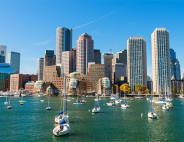
MASSACHUSETTS: Smart for Business
-

PENNSYLVANIA: Ready to Grow with You
-
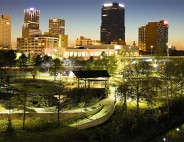
Arkansas: Melting Pot of Industries
-
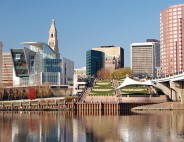
Connecticut: Strong in Manufacturing & Tourism
-
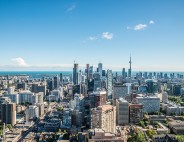
Ontario: A Top Economic Leader in North America
-
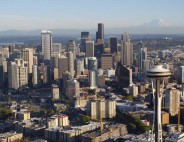
Innovation and Connections Energize Washington State
-

Governor Funds the Rebuilding of Rhode Island
-
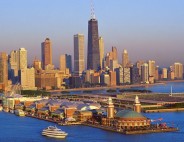
Illinois Seeing Growth from Its Quality Workforce
-
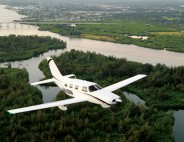
Florida: Aerospace Flies Higher, Jobs Take Off
-

Wyoming Grows Technology and Innovation Assets









